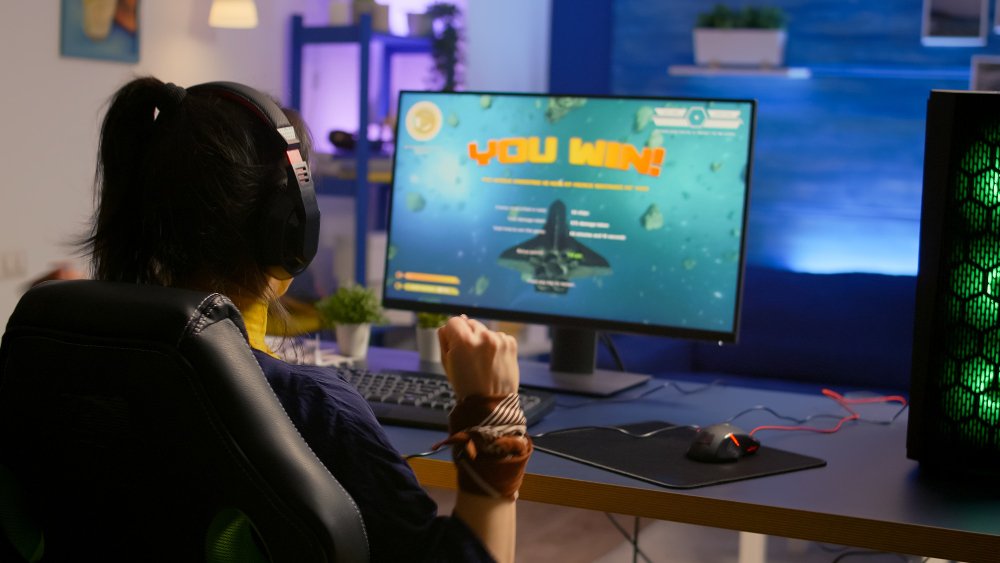PC gaming has long been a cornerstone of the gaming industry, offering players high-performance experiences, modding capabilities, and complex mechanics. However, with this sophistication comes a higher demand for quality and performance. As games become more intricate, testing becomes a vital part of ensuring a successful release. In fact, PC game testing plays an essential role in turning a buggy, incomplete build into a polished, high-performance masterpiece.
This article explores the critical role of PC game testing, why it’s essential, and how it can lead to a smoother launch, happier players, and long-term success.
The Complexity of PC Gaming: Why Testing Matters
PC gaming stands out due to its vast flexibility in hardware configurations. Players can run games on a range of setups—from budget laptops to high-end gaming rigs with the latest GPUs. This variability creates a challenge for developers: ensuring that the game runs smoothly across this diverse spectrum of hardware.
Without proper testing, even the most beautifully designed game can suffer from crashes, poor performance, or bugs. Testing allows developers to catch these issues before release, ensuring that players experience the game as it was intended.
Key Testing Areas:
- Hardware Compatibility: PCs have countless combinations of CPUs, GPUs, and memory configurations. Testing ensures the game works well on both minimum-spec machines and high-performance setups.
- Operating System Variations: Testing the game on different versions of Windows, Linux, and other operating systems ensures compatibility.
- Peripherals: Many PC gamers use peripherals like joysticks, VR headsets, and ultra-wide monitors. Testing these devices is essential for delivering a seamless experience.
Performance Optimization: Ensuring Smooth Gameplay
One of the most important roles of PC game testing is performance optimization. Poorly optimized games can suffer from frame rate drops, long loading times, and lag—all of which can turn off players and result in negative reviews.
PC game testers work to identify areas of the game that are resource-intensive and optimize them for better performance. This includes managing memory usage, ensuring stable frame rates, and reducing loading times.
Key Performance Metrics:
- Frame Rate Consistency: Ensuring a stable FPS (frames per second) is crucial, especially in fast-paced games.
- Load Times: Long load times can frustrate players. Testing helps developers optimize resource loading and improve performance.
- System Resource Usage: Testers monitor CPU, GPU, and RAM usage to ensure the game doesn’t overtax a system, leading to crashes or slowdowns.
Identifying and Fixing Bugs
Bugs are inevitable in game development, but players expect polished releases, especially for PC games. Bugs range from minor visual glitches to game-breaking issues like crashes or progression blockers. The primary role of a PC game tester is to uncover these bugs and report them to the development team for fixes.
Thorough bug testing ensures that all aspects of the game, from physics to AI behavior, work as intended. It also covers smaller but crucial elements like animations, lighting, and sound synchronization.
Types of Bugs to Watch For:
- Graphical Bugs: Missing textures, flickering shadows, or poorly rendered objects.
- Gameplay Bugs: Characters falling through the map, broken AI behavior, or physics glitches.
- Audio Bugs: Missing sound effects, delayed audio triggers, or unsynchronized music.
Stress Testing: Can Your Game Handle the Pressure?
PC games, especially online multiplayer titles, need to be stress-tested to handle large numbers of players or intense in-game scenarios. Stress testing pushes the game to its limits by simulating peak usage or particularly demanding in-game moments. It ensures that your game can handle heavy player loads, large data exchanges, and intense graphical demands without crashing.
For multiplayer games, stress testing also includes testing server capacity and performance, ensuring that the game’s backend can support the player base without causing lag, disconnections, or crashes.
Stress Testing Focus:
- Server Stability: For online games, stress testing servers to manage peak traffic and avoid downtime.
- High-Demand Scenarios: Testing performance during action-heavy scenes, large battles, or high NPC (non-playable character) counts.
- Memory Management: Ensuring the game can handle memory-intensive operations like rendering large environments or complex physics.
Ensuring Smooth Multiplayer Experiences
For PC games that offer multiplayer modes, testing is especially crucial. Multiplayer introduces several complexities, such as network latency, player synchronization, and server-side performance. Testers simulate various scenarios, including different internet speeds, unstable connections, and real-world multiplayer behaviors to identify issues early on.
Multiplayer game testing also includes rigorous playtesting to ensure that game balance, matchmaking systems, and in-game mechanics work harmoniously. If any of these elements break, the multiplayer experience can become frustrating and lead to player churn.
Key Multiplayer Testing Areas:
- Latency and Ping: Ensuring that gameplay remains responsive, even with players from different regions or with varying internet speeds.
- Server Performance: Testing servers to handle large numbers of players simultaneously without causing lag or crashes.
- Matchmaking and Balancing: Ensuring that matchmaking systems work effectively and that game mechanics are balanced for fair play.
User Interface (UI) and User Experience (UX) Testing
UI/UX testing plays a key role in how players interact with a game. A confusing interface or poorly designed menus can frustrate users and detract from the overall experience. Testers examine how intuitive the controls, HUD (heads-up display), and menu systems are, ensuring that players can easily navigate the game without confusion.
For PC games, UI/UX testing also includes verifying how the interface scales on different resolutions, from standard HD monitors to 4K setups and ultrawide displays.
What Testers Look For:
- Control Responsiveness: Ensuring that keyboard and mouse inputs are smooth, responsive, and customizable.
- Interface Scaling: Checking that the UI looks clean and functional on different resolutions and aspect ratios.
- Menu Navigation: Verifying that menus are easy to navigate, and all options are accessible to players.
Localization and Accessibility Testing
If your game is intended for a global audience, localization testing is vital. This ensures that the game’s text, voiceovers, and cultural references are correctly adapted to different languages and regions. Additionally, accessibility testing ensures that the game is playable for all users, including those with disabilities.
Localization Testing Focus:
- Accurate Translations: Ensuring that in-game text and dialogue are properly translated and culturally appropriate.
- UI Adaptation: Ensuring that text fits properly in various languages, which can have longer or shorter word counts.
- Cultural Sensitivity: Verifying that in-game content aligns with the cultural norms and values of the target audience.
Accessibility Testing Focus:
- Color Blindness Settings: Offering options for players with color vision deficiencies.
- Subtitles and Audio: Ensuring that subtitles are available and correctly timed for players who are hard of hearing.
- Customizable Controls: Allowing players to remap controls for different accessibility needs.
Meeting Platform-Specific Requirements
PC game testing also ensures that the game meets the necessary platform-specific requirements for distribution platforms like Steam, Epic Games Store, and GOG. These platforms have guidelines for performance, file size, security, and installation processes, and failing to meet them can delay or prevent the release of your game.
Testers ensure that your game complies with these guidelines and that the game is ready for smooth distribution and installation on these platforms.
Platform-Specific Testing Includes:
- Game Installer Testing: Ensuring the installation process is quick and error-free.
- Platform Compliance: Verifying that the game meets the technical and performance requirements of platforms like Steam or GOG.
- DLC and Update Testing: Ensuring that downloadable content (DLC) and patches install correctly without corrupting game files.
Conclusion: The Path from Bugs to Perfection
PC game testing plays a pivotal role in the success of any title, guiding it from a rough, buggy build to a polished and optimized release. Testing covers a wide range of critical areas, from hardware compatibility and performance to multiplayer stability and user experience. By thoroughly testing every aspect of your PC game, you ensure that players receive a smooth, bug-free experience that keeps them coming back for more.
Ultimately, investing in comprehensive PC game testing is not just about identifying bugs—it’s about delivering perfection. The more effort and time put into testing, the better the game will perform, the happier the players will be, and the more successful the launch will become.









